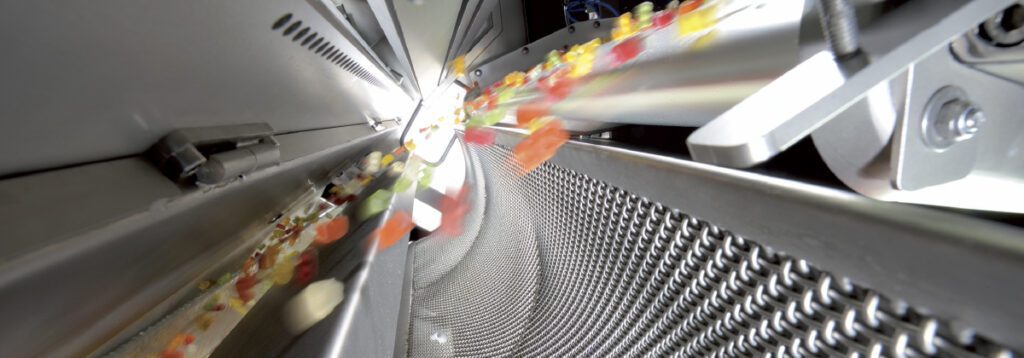Scalable cloud architecture gears MYND up for the commercial market
Kapernikov offers a unique combination of expertise: they know AI and data science, and they can hel ...
Machine vision
Optimum Sorting designs and builds optical sorting machines for the food industry. Kapernikov helped them to use state-of-the-art machine learning in their new Cumulus platform, which enables them to offer their customers better sorting results and less downtime.

Optimum Sorting’s new Ventus free-fall laser sorting machines are the first machines controlled by their new Cumulus software platform. Thanks to state-of-the-art machine learning algorithms developed by Kapernikov, this new software platform makes teaching new products faster and more intuitive and allows online adjustments to the sorting program.
Most of these machines are used in the food industry. In rare cases, the input streams to these machines contain foreign objects such as stones, metal or glass, which should be rejected. Because explicitly teaching these objects is difficult (one would have to foresee every possible foreign object) and dangerous (it would require inserting said foreign objects in the production line), the classification algorithm needs to be supported by a novelty detection algorithm. For safety, everything that is not explicitly taught as a good product or as a known defect is then classified as a foreign object.
Because the quality of the input stream varies and the quality requirements for the sorted products depend on the intended use, Optimum Sorting turned to Kapernikov to find an easy way to adjust the sensitivity of the model without having to annotate additional images.

Kapernikov developed a custom machine learning algorithm for this application. We started by implementing a proof-of-concept and collecting data to verify the effectiveness and efficiency of the algorithm in a few difficult sorting applications.
We optimized the efficiency of both training and inference (classification). First of all, it’s obvious that real-time inference is mandatory for this application. In addition, a training loop in the order of seconds gives the machine operator an immediate feedback on his or her annotations or adjustments. This greatly improves the user-friendliness of the machine.
In addition to the new machine learning algorithm, Kapernikov improved the GUI by using the same techniques used in modern annotation tools.
These enhancements to the Cumulus engine and GUI improve the classification accuracy. They also allow Optimum Sorting’s customers to set up their machines quickly for new sorting tasks and to adjust the classifier during production. This leads to better sorting results and less downtime.